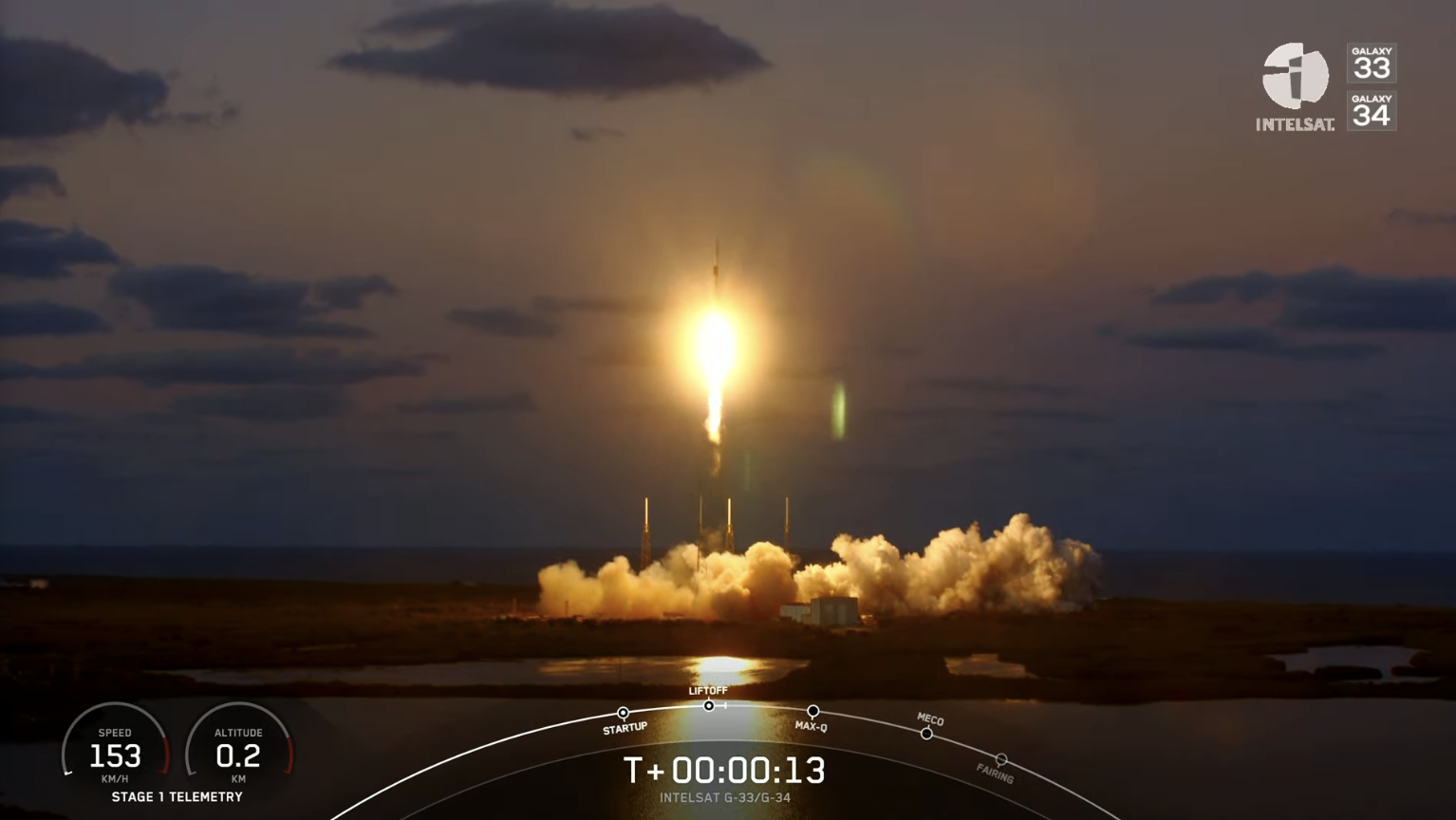
A record-tying 14-times-flown Falcon 9 powered uphill from the Space Coast a couple of days later than originally planned on Saturday evening, as SpaceX wrapped up its third launch of October inside the month’s first ten days. The veteran B1060 core—which first saw service back in June 2020 to deliver the third Block III Global Positioning System (GPS III-03) navigation and timing satellite to orbit—took flight from storied Space Launch Complex (SLC)-40 at Cape Canaveral Space Force Station, Fla., at 7:05 p.m. EDT.
Liftoff came right on the opening of Saturday’s 70-minute “window” as a backlog of launches pushed back in part due to the recent onslaught of Hurricane Ian are steadily cleared from the books. Aboard the blackened and scorched B1060 were Galaxy 33 and 34, a pair of geostationary-bound satellites owned and operated by Intelsat to operate in the upper part of the C-band spectrum, a range of wireless radio frequencies used for critical telecommunications and data connectivity worldwide.
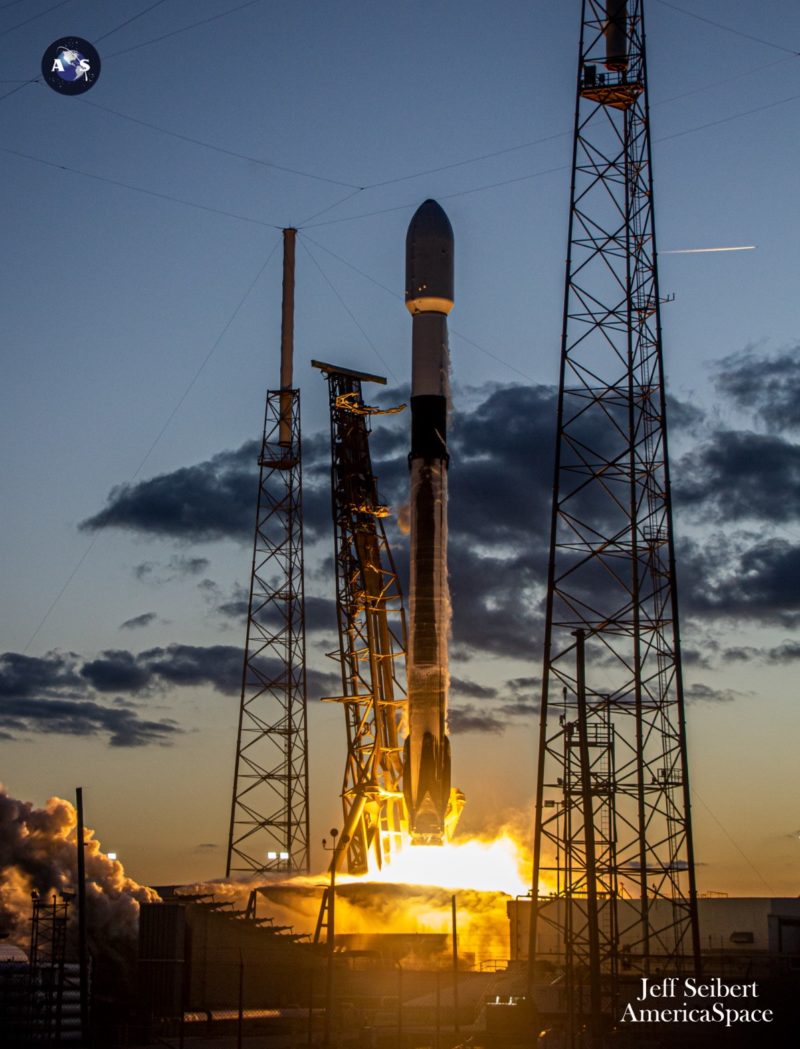
Contracts to build these two satellites were awarded to Northrop Grumman Corp. in June 2020 in support of an order from the Federal Communications Commission (FCC) to make the lower portion of the C-band spectrum available to mobile network operators. At the same time, Maxar Technologies was contracted to build four other satellites—Galaxy 31, Galaxy 32, Galaxy 35 and Galaxy 36—in furtherance of the FCC’s plan to reallocate 300 megahertz of C-band spectrum to 5G terrestrial wireless services by December 2023.
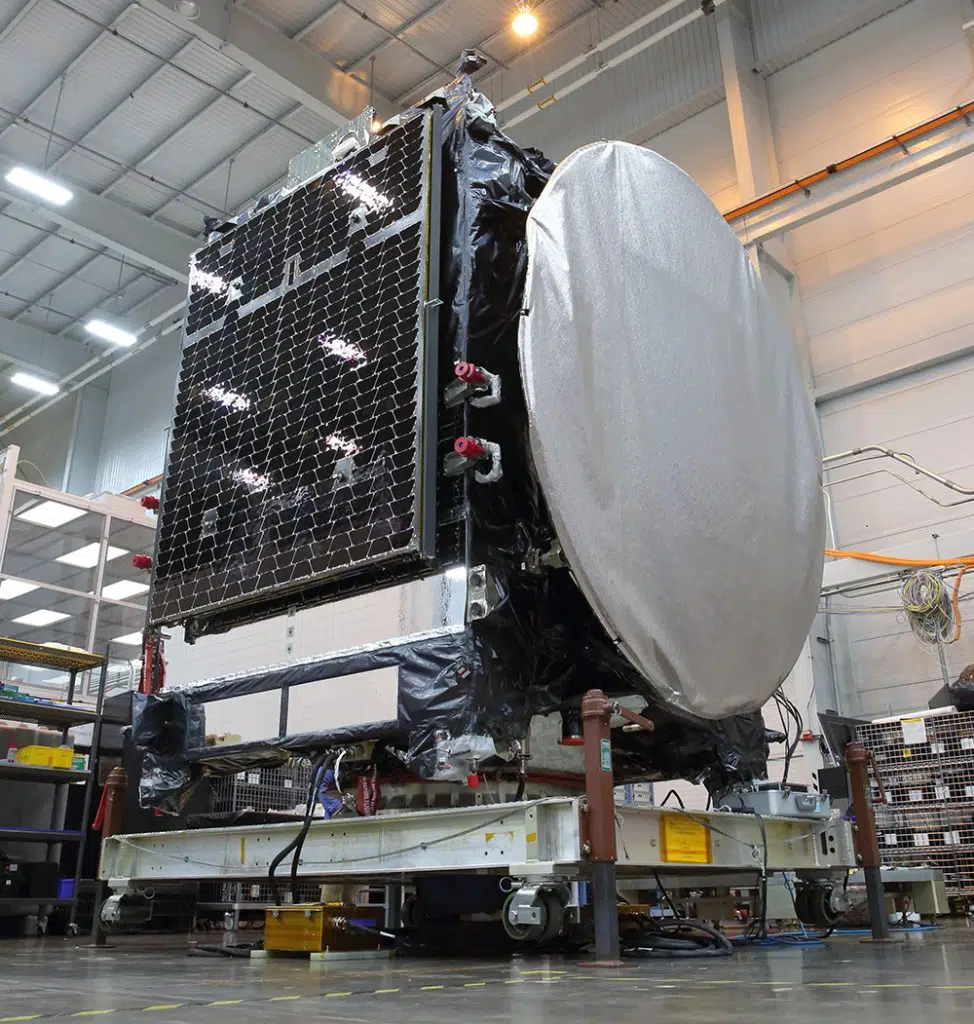
Current plans envisage Galaxy 31 and 32 riding a SpaceX Falcon 9 to orbit in November, with Galaxy 35 and 36 flying an Ariane 5 booster from Kourou, French Guiana, in December. Another satellite, Galaxy 37, was previously set to launch via Arianespace, but will now be lofted by a Falcon 9 in the third quarter of next year.
Following Hurricane Ian’s onslaught in the second half of September, the opening days of October have proven a busy time, with two missions—from the East and West Coasts of the United States—flown within just seven hours and ten minutes of one another on Wednesday. First, at 12:00:57 p.m. EDT, the brand-new B1077 core lifted Dragon Endurance and Crew-5 from historic Pad 39A at the Kennedy Space Center (KSC) in Florida on their 29-hour, 17-orbit trek to the International Space Station (ISS), to be followed at 4:10 p.m. PDT by the five-times-flown B1071 with a stack of Starlink internet communications satellites out of Vandenberg Space Force Base, Calif.
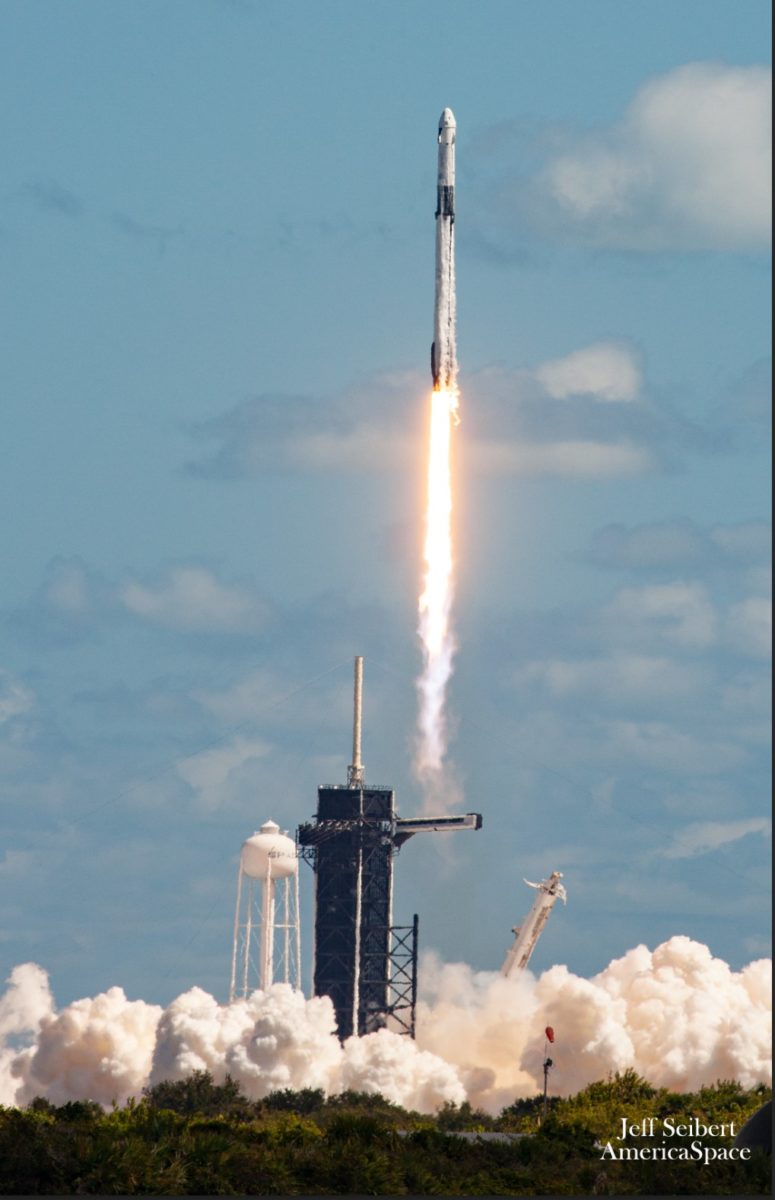
Attention then turned back to the Space Coast, where a cool and relatively dry airmass over the southeastern United States was reinforced by a stronger area of high pressure spilling out of the Central Plains. “Dry and sunny weather will continue,” noted the 45th Weather Squadron at Patrick Space Force Base, “limiting the threat for Atlantic showers into the primary launch window.”
Conditions for both Thursday evening and a backup opportunity on Friday were thus expected to hover close to 90-percent-favorable. In readiness for launch, the Autonomous Spaceport Drone Ship (ASDS), “A Shortfall of Gravitas”—newly returned from a Starlink mission two weeks ago—put to sea out of Port Canaveral on Monday, bound for a position some 400 miles (640 kilometers) offshore in the Atlantic Ocean.
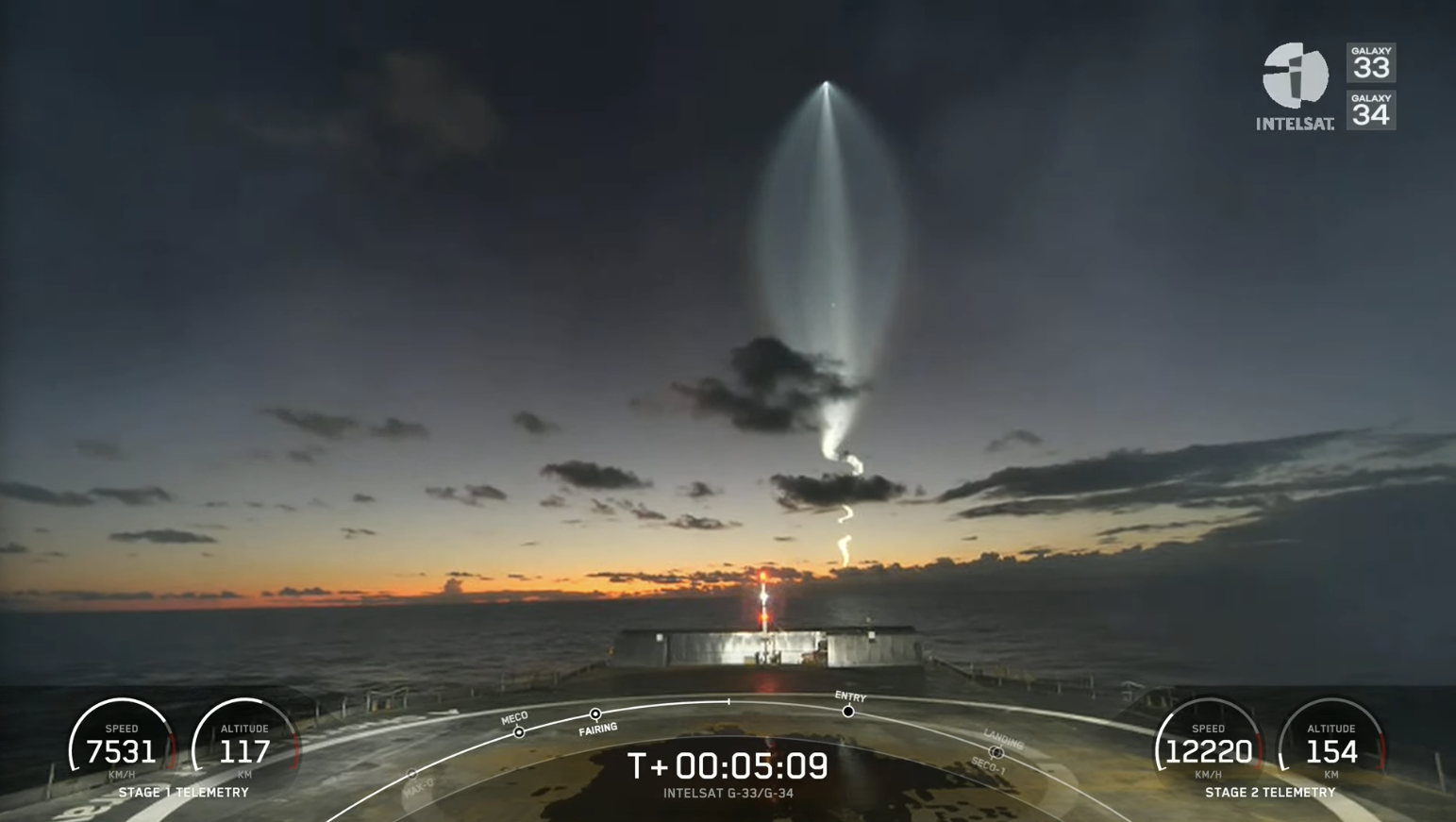
But Thursday’s opening launch attempt—within a 67-minute “window” that opened at 7:07 p.m. EDT—ultimately came to nought. Liftoff was adjusted to 7:20 p.m. EDT, before suffering an automatic abort at T-30 seconds and a 24-hour scrub.
“Rocket and payload are in good health,” SpaceX tweeted after Thursday’s scrub. “Teams are working toward tomorrow’s 69-minute window opening at 7:06 p.m.”
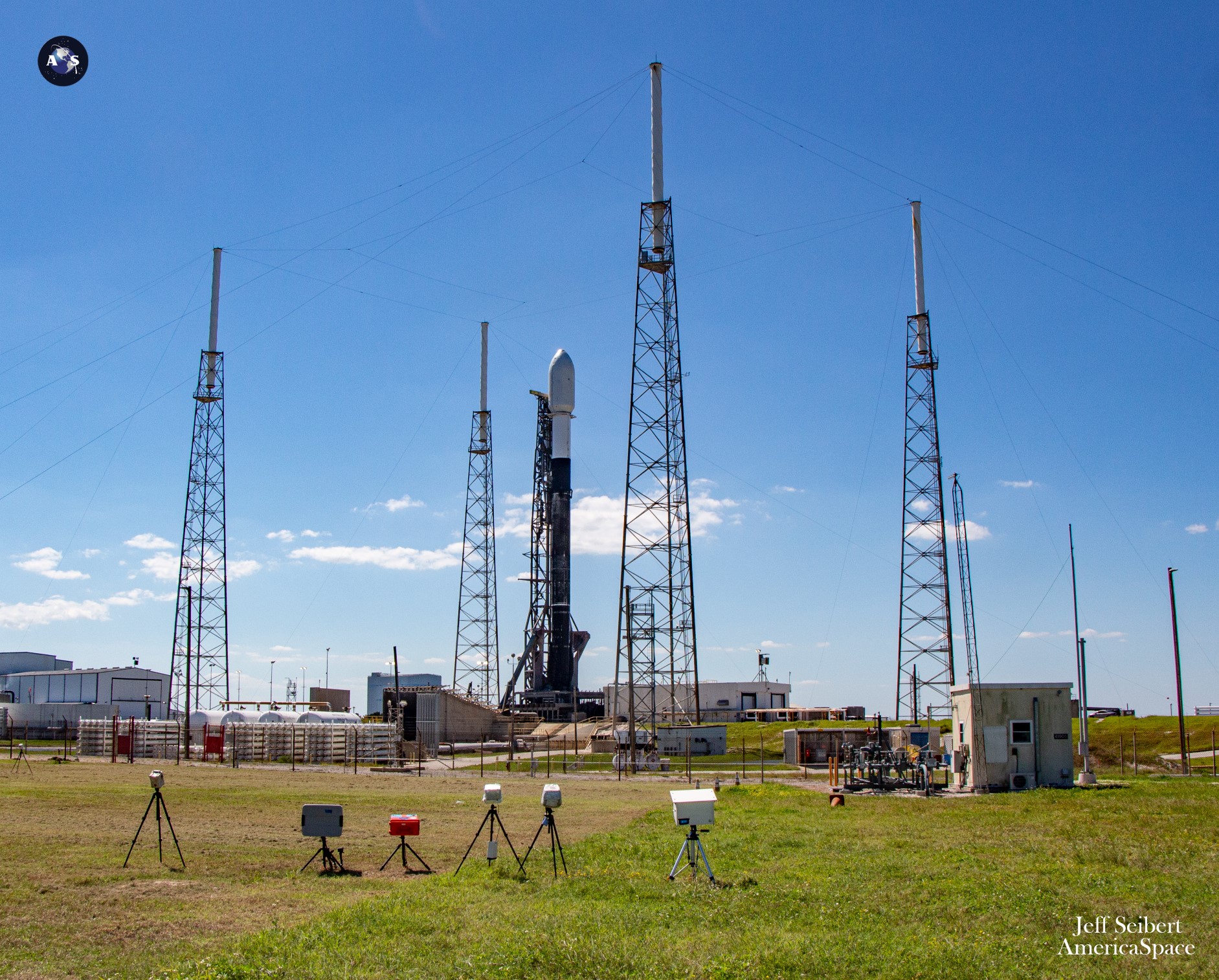
And second attempt on Friday also came to nothing, postponed 24 further hours “to allow additional time for vehicle checkouts”.
Saturday night’s third launch try ran like a charm, with B1060 becoming only the second Falcon 9 core to log a 14th mission. First launched on 30 June 2020 for GPS III-03 and most recently flown earlier this summer, this booster has so far delivered 553 Starlink low-orbiting internet communications satellites to orbit, as well as Turkey’s powerful Türksat 5A geostationary communications satellite, today’s Galaxy 33/34 dual-stack and last year’s multi-mission Transporter-2 payload.
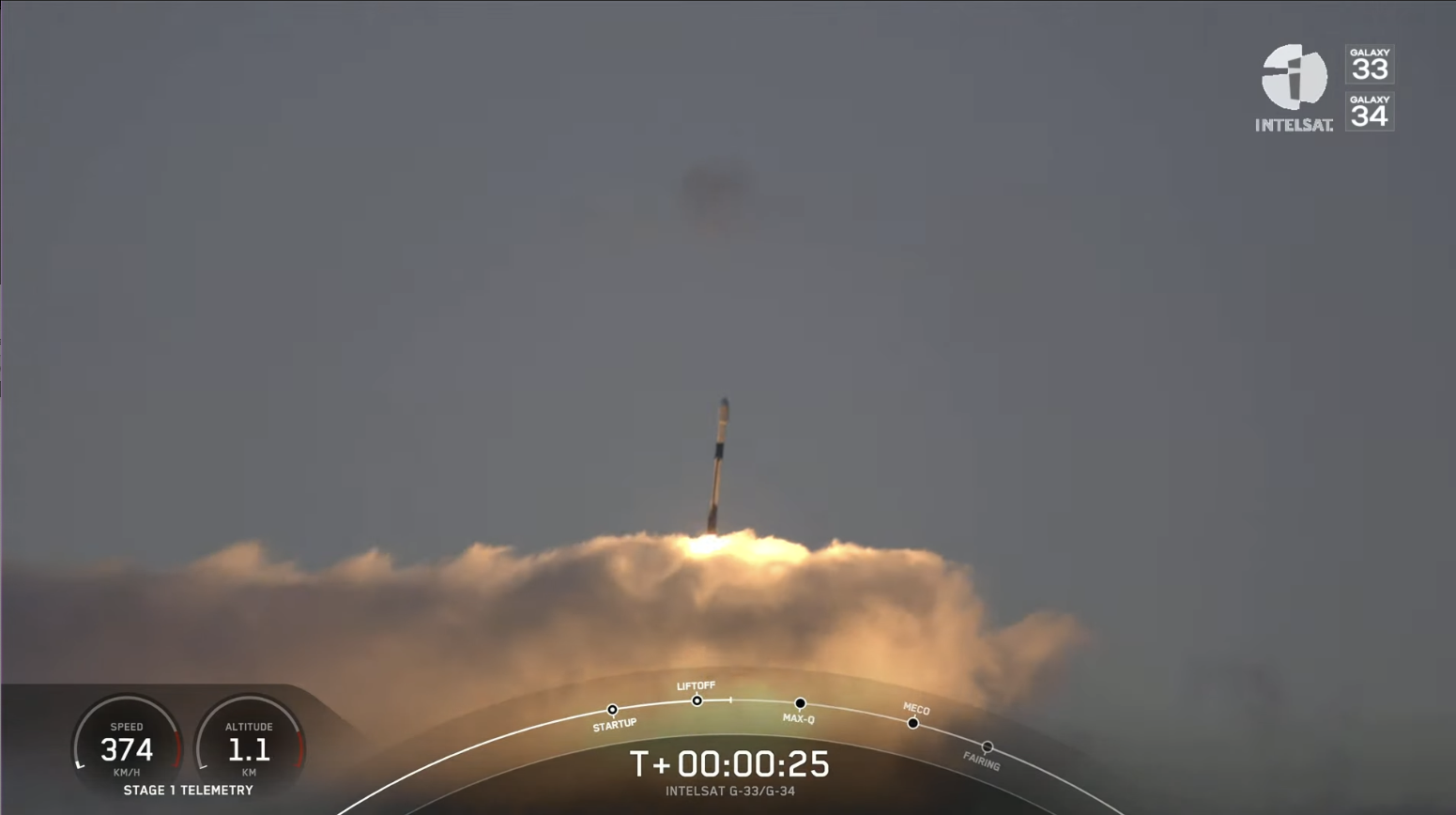
This impressive raft of missions has seen B1060 mark out its personal territory as the first Falcon 9 core to log a 13th flight in June 2022, eclipsing sister B1051 but being narrowly beaten to a 14th launch last month by fellow life-leader B1058.
She also established a new empirical record—now broken—of just 27 days between two launches by the same booster in the early spring of 2021.
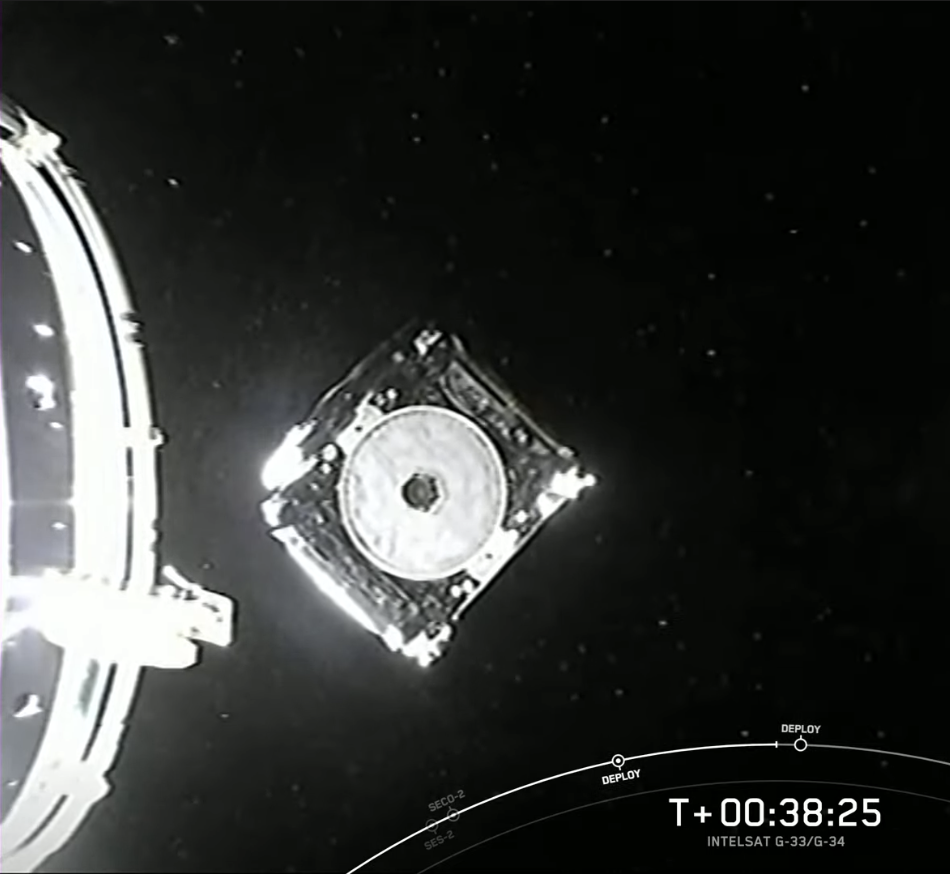
After boosting the Falcon 9 aloft for the first 2.5 minutes of Friday night’s flight, B1060 separated from the stack and pirouetted to a smooth touchdown on ASOG. Meanwhile, the second stage executed a standard six-minute “burn” to pre-position the payload for release, with Galaxy 33—at the top of the stack—deploying at 33 minutes and Galaxy 34, sitting beneath it, at 38 minutes into flight.
The satellites will now utilize their on-board propulsion systems to lift themselves to their proper geostationary locations, with Galaxy 33 targeting a “slot” at 133 degrees West longitude and Galaxy 34 aiming for 129 degrees West longitude. Based upon Northrop Grumman’s proven GEOStar-3 “bus”, they are expected to support an active operational lifespan of around 15 years.
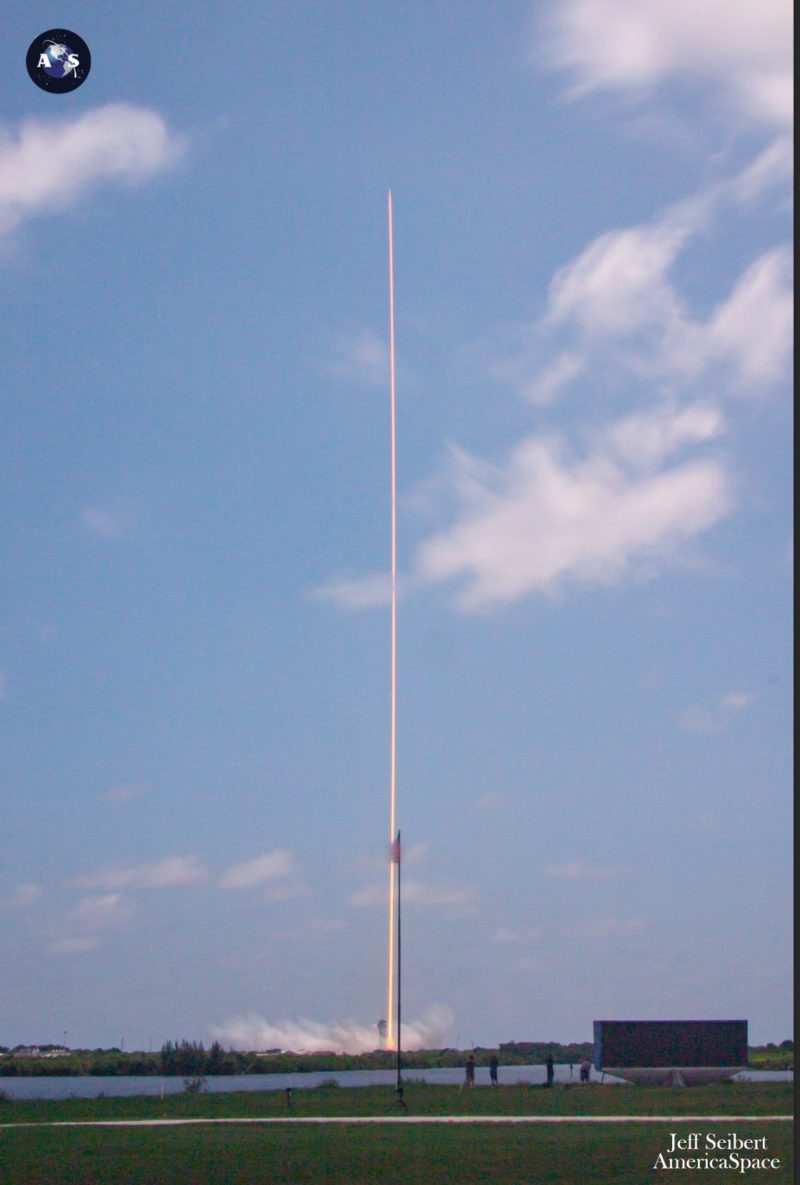
Saturday’s launch was the 46th Falcon 9 flight in the 40th week of 2022, already far outpacing the 31 missions executed by the Hawthorne, Calif.-headquartered provider by the end of last year. That translates on average to a launch every six days, although SpaceX’s cadence has been such that on two occasions this year—firstly in June and again this week—as many as three Falcon 9s have roared aloft within a 36-hour span.
Twelve boosters (three of which only entered service within the burgeoning SpaceX fleet this year) have completed those 46 missions. Five Falcon 9 cores flew five times apiece and one launched no fewer than six times between January and August.

Each month except March saw at least four launches, with SpaceX achieving its first six-launch month in April. And reusability statistics, also, have shot through the roof: this year we have seen the first boosters make 12th, 13th and 14th flights.
Those 46 missions—including ten from Vandenberg and the rest from the Space Coast—have seen over 1,500 Starlinks, three multi-payload Transporter hauls and a pair of highly classified payloads for the National Reconnaissance Office. Added to that list have been South Korea’s first lunar probe, four geostationary-bound communications satellites and four missions to the International Space Station (ISS), including April’s historic, all-private Ax-1 crew.




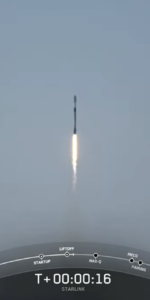

4 Comments
4 Pings & Trackbacks
Pingback:SpaceX Launches Fourth Falcon 9 of October, Fourth Geostationary Mission of Year - AmericaSpace
Pingback:After Three-Year Gap, Falcon Heavy Returns to Flight, Busy Manifest Ahead - AmericaSpace
Pingback:SpaceX Bids Farewell to the Old Guard, Expends 14x-Flown Falcon 9 - AmericaSpace
Pingback:SpaceX’s First 2023 Mission Includes 114-Strong Payload Haul - AmericaSpace